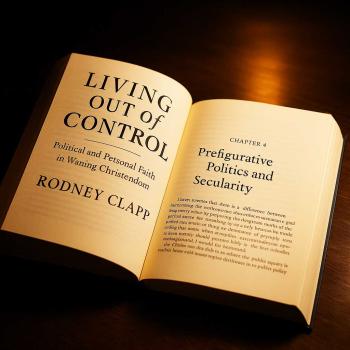Ethics and Toxic Masculinity
In recent months there has been a renewed interest in and use of the concept “toxic masculinity”—largely due to this recent spate of male sexual predators who are celebrities. And the #MeToo Movement (which I fully support).
So what is meant by “toxic masculinity?” There are many definitions and descriptions of it. But they all seem to have one thing in common—that many boys and men are socially conditioned to repress feelings of sorrow and empathy (“Boys don’t cry”), to suppress vulnerability, and to treat both men and women aggressively. The men who are treated aggressively are usually gay or bisexual men or are men who do not “fit” the toxic model of masculinity held in the minds of those infected with it.
At the core of toxic masculinity seems to be an image of true manhood (or boyhood) that elevates the “alpha male” image to the image of true masculinity and applauds male invulnerability and aggression toward weaker people—dominance, power-over, sexual aggressiveness.
Society is coming to recognize this pattern as deleterious to everyone—even boys and men caught up in it. “Men for Change” is a network of male-led groups on college and university campuses devoted to encouraging men to re-think masculinity—away from harmful behaviors toward protective behaviors.
*Sidebar: The opinions expressed here are my own (or those of the guest writer); I do not speak for any other person, group or organization; nor do I imply that the opinions expressed here reflect those of any other person, group or organization unless I say so specifically. Before commenting read the entire post and the “Note to commenters” at its end.*
However, there are some over-reactions to toxic masculinity. For example, I have heard it said quite openly that “Men are violent”—with no qualifications such as “many” or even “most.” Some (especially) women who have been victimized by toxic masculinity are globalizing it onto all males. This could not be done with any other group of human beings (who cannot be other than they were born) without strong push back especially in the media and the academy.
Not all men are infected with or guilty of toxic masculinity. And one of the best “cures” for toxic masculinity would be to recruit model men (masculine but also empathetic and vulnerable) into public and private schools—especially at the lower levels (viz., elementary and middle schools).
Instead I see two responses to toxic masculinity. First, punishment of men who act out of toxic masculinity to the harm of others, and, second, portrayal of men in popular culture as either suffering from toxic masculinity or as not masculine at all. In fact, there is very little to no public conversation about what non-toxic masculinity would look like.
My suggestion here is that we, as a society, not equate masculinity itself with toxic masculinity. That is what I observe happening.
On the other hand, I have noticed some real improvement of this situation in some television commercials—featuring really good husbands and fathers playing rough but safely with their children, taking their sons and daughters on outdoor adventures, etc. One recent commercial by a major company making grooming products for men showed men being masculine and confronting toxic masculinity. Unfortunately, some men saw this as a betrayal of men.
Toxic masculinity is one of the causes of wars. I would go so far as to suggest that World War 1 was caused by toxic masculinity. And look who were the main victims of it—men. Many men are victims of toxic masculinity, something often overlooked.
One of the main ways we overlook this fact in educational institutions is turning a blind eye to the damage bullying and hazing does to boys and young men. There is much talk about protecting girls from bullying. I have even read in a magazine article about girl-bullying (mostly in social media) that boys don’t engage in that behavior; they just have a wrestling match and get it over with. Nothing could be further from the truth. Many male suicides are the result of bullying and hazing. And much college and university hazing takes the form of sexual humiliation which I believe often results in victims’ suicides.
“Why did he commit suicide the day after visiting a university he intended to attend?” “Why did he commit suicide right in the middle of pledging during rush week?” “Why did he commit suicide after a night out with his fraternity brothers?” Often the answer is, I believe, sexual humiliation. But that is rarely talked about. It is so common, however, that it should be the focus of some radical intervention by school officials. No initiation ritual should be absent a school official, be it a professor or administrator or leading staff person. And when school officials hear about such, they ought to intervene immediately and even get police involved if there is any hint of hazing that includes violence of any kind—including sexual humiliation.
The argument one often hears about hazing is that it is just part of college and universities (and sometimes high school) life. Not sufficient. Many boys and young men have no understanding or suspicion of what is about to happen to them. Once they are alone with a few other “initiates” or “pledges” in a place they often don’t even know they can do little but submit. I personally know of young male suicides that cannot be explained any other way. Usually, though, the families do not want the situation known.
Toxic masculinity hurts everyone—including many boys and men. The cure is prevention, not just (only) punishment. Boys need to be programmed by parents and schools and clubs and churches to be vulnerable and to support vulnerability, to take risks without harming others, to be adventurous without doing harm, to be physical without risking life and limb, to be rough and tumble, if that is their inclination, without doing damage to anyone or anything.
One thing that I believe will not work is telling boys and men they need to be “fixed.” When organizations offer programs for girls and women, to empower them and bring them to value their own equal dignity, worth and right to full opportunity with boys and men, they don’t advertise them in any derogatory or demeaning way. On the other hand, I have observed, some programs aimed at boys and men (especially educators) tend to imply that they need to be fixed and by “fixed” I mean stripped of their masculinity. Boys and men will simply avoid such classes and programs. Instead, educators and others who desire to help boys and men avoid toxic masculinity need to advertise their programs and classes as aimed at helping them become the whole male persons they can be.
*Note to commenters: This blog is not a discussion board; please respond with a question or comment only to me. If you do not share my evangelical Christian perspective (very broadly defined), feel free to ask a question for clarification, but know that this is not a space for debating incommensurate perspectives/worldviews. In any case, know that there is no guarantee that your question or comment will be posted by the moderator or answered by the writer. If you hope for your question or comment to appear here and be answered or responded to, make sure it is civil, respectful, and “on topic.” Do not comment if you have not read the entire post and do not misrepresent what it says. Keep any comment (including questions) to minimal length; do not post essays, sermons or testimonies here. Do not post links to internet sites here. This is a space for expressions of the blogger’s (or guest writers’) opinions and constructive dialogue among evangelical Christians (very broadly defined).












